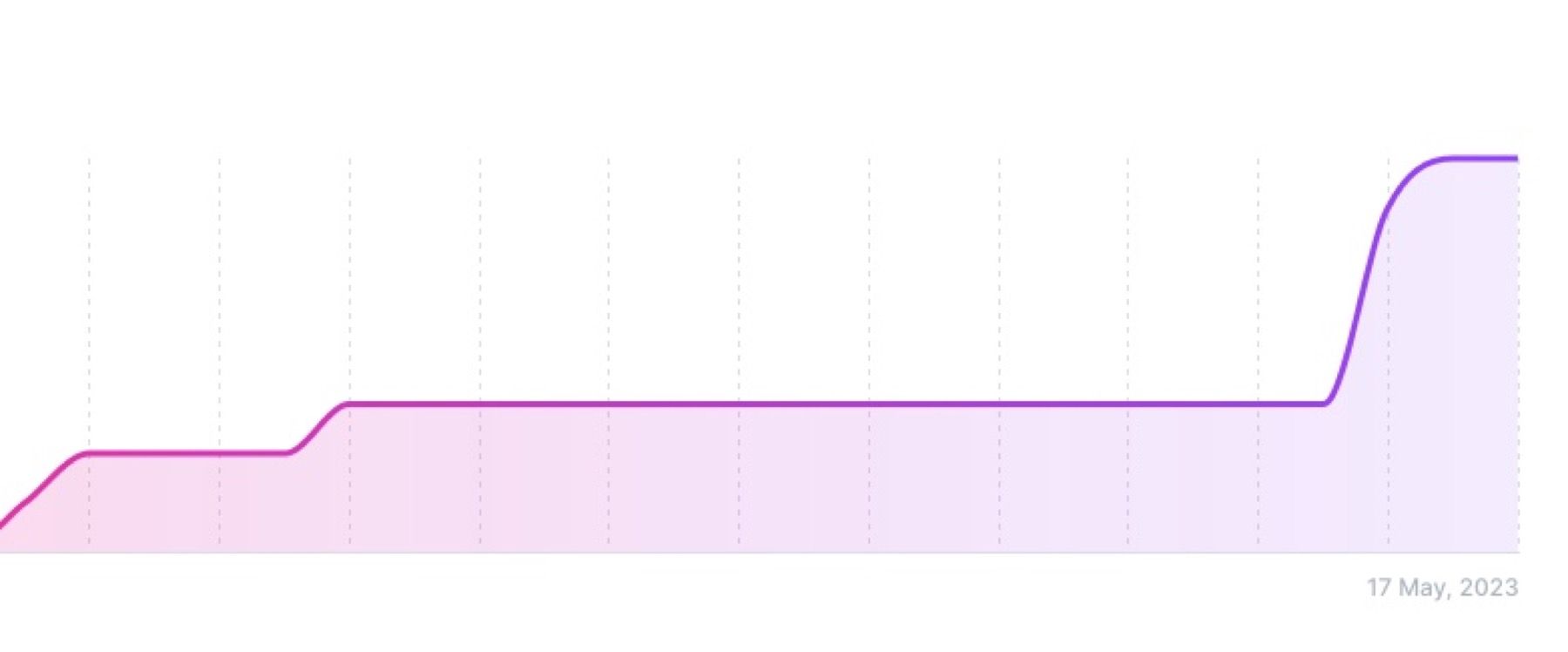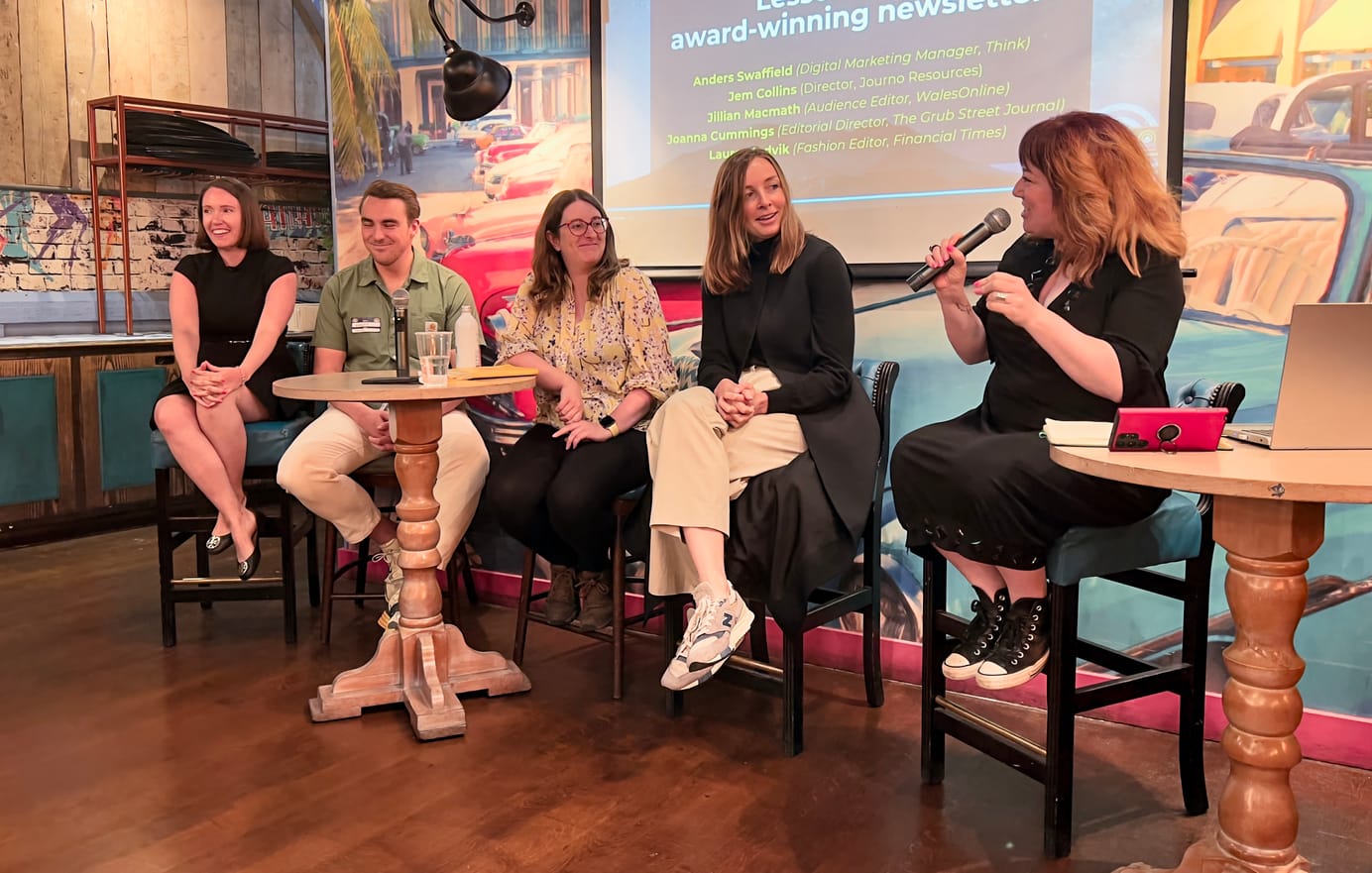
This is how the future media ecosystem will look
The death of Buzzfeed News and the bankrupty of Vice make it clear how the new media ecosystem is developing: it's surprisingly… nautical?
A lovely niche keeps you warm at night
In recent weeks, I’ve been trying to carve out some time to get some of my side projects going again. On Monday, I took an hour or so to research and write an issue of a newsletter I launched a while ago, but which has been moribund for over a year. I hit “send” with a sense of satisfaction — but very little hope that it would have much impact. I know what a slog newsletter growth can be.

Looking at the open rate two days later — over 60% — and the fact that I’ve grown my subscriber base by over 10% in that time, I do wonder why I’m bothering to write here at all…
(Well, apart from the fact that I’m up for an award…)
Actually, that’s not fair on myself. OM&HB is a fairly complex sell — it’s a site that’s evolved over 20 years, and the main reason for subscribing to it is that you value the insights and aggregation I bring. The other newsletter? It’s targeted at a small but passionate community, who are easily reachable in a limited number of places, and has a clear value proposition that’s not being met anywhere else.
And that’s an important lesson in the nature of media in the digital age.
Where Vice and Buzzfeed News went wrong
It’s a lesson people still haven’t quite assimilated. Do you want proof? Buzzfeed News is gone. Vice is bankrupt. Why did these digital media innovators crash and burn? Well, the reasons are complex, but one of them is that neither site has a clear value proposition. Vice had a tone of voice and a target market — but those are supply side decisions, not demand side propositions. Why should you read Vice over any of the other innumerable youth-focused sites? What did Buzzfeed News offer that differentiated it from the other mainstream news sites?
It’s arguable that heavily VC-backed publications have little choice other than to try to address the mainstream market — it’s the only place where they’re like to get the kind of return they need to justify their VC investment. But it hasn’t worked for Vice, and even the Buzzfeed News parent site is struggling. Is there actually a gap in the market for yet another mainstream news publication? Almost certainly not. We're more likely to see a few more existing players fail than a new entrant survive.
And the reason why is simple enough. We live in an attention-poor age. Content is abundant, and attention is scarce. One way that people manage their precious attention when there’s more available journalism than they can ever read is what I’ve always called the “flight to niche”. You drill down to the specific content that appeals to you most: you don’t subscribe to a photography website, but choose a newsletter for street photographers, for example. You don’t read a general nature-newsletter, but instead one about exploring nature with a young family.
You choose exactly the content that has the most value to you, and supplement that with one or two general interest sites.
A nautical metaphor for the digital media ecosystem
You can see that playing out in the businesses that survive. The media ecosystem is developing in two ways simultaneously. There’s the attention supertankers, of which there will only be a few. The NYTs and Mail Onlines of this world, aggregating vast numbers of readers globally, through provisions of a wide range of content. If you're monetising through ads, you do it as cheaply as possible. If you're monetising through subscriptions, you need a mix of quality, range and depth. These are big, expensive beasts to run. There won't be room for many of them in a globalised news market.
But there’s also a massive flotilla of small yachts, row boats and kayaks, each with a clear, focused value proposition, each carrying a small, but sustainable audience of passionate readers. Some of those yachts (the larger ones) carry the business publications, some the emergent new wave of local news, and still others the hobbyists, and the political campaigners, and any number of other niches that can be usefully and profitably filled.
The traditional media have done a good enough job of converting themselves into supertankers. They had the audience base to start with and, after a few missteps, they’ve found a multitude of ways of turning that audience into a sustainable online one. The odds of a start-up, even a well-funded one, reaching supertanker status with a single site are now vanishingly small.
True digital innovation is happening in niches
The “next” wave of innovation isn’t going to come from a big site launch. It’s going to come from those smaller scale, niche start-ups that will grow decent audiences without the deadweight of VC return expectations on their backs.
Some of them will become larger business through aggregation of niches. One could certainly argue that Vox Media is exactly that: an aggregation of fairly large niche sites:

It looks much like one of the old B2B or consumer magazine publishers used to: a big business built out of an aggregation of smaller titles.
People are building the tools to make this ecosystem develop. The really interesting CMS action right now isn’t in the big systems used for these mega-sites. They’re either using their own custom CMSes or heavily optimised and scaled versions of WordPress. The emergent tools are the likes of Ghost, Beehiiv and Substack, that have web, newsletter, and subscriptions all wrapped into one package.
Let a thousand newsletters bloom
They’re allowing a thousand micro-publications to test their audience, and scale relatively rapidly, if their core idea is good enough.
And that brings us back to where we started:
- A clear, identifiable market
- An under-served need for information
- Multiple ways of reaching that audience
- Enough value in the ecosystem to make it profitable
My little side-project ticks the first three boxes, but sadly fails on the last one. However successful it gets, it will never make me rich. However, that still puts it ahead of Vice which, if you’re generous, only managed to hit two of them…
(No, I haven’t mentioned the newsletter in question. Free year’s subscription to the paid version of this newsletter to the first person who figures it out…)
Quickies
- 🌀 I really like the idea of the reader cyclone, as described by Grzegorz Piechota. I suspect that’s ending up on some of my lecture slides next year. Why? Because it puts the focus on ongoing engagement, rather than single conversion events.
- 🔎 Some useful SEO tools — some I’m familiar with, some I’ll be checking out.
- 🕵🏻♀️ Fabulously useful piece on finding geolocation leads when verifying social media content. From Bellingcat, obvs.
- 🤦🏽 Talking of Bellingcat, guess which champion of free speech has limited their reach on social media. Go on, guess. Yes, him.
- 👩👧👧 Penelope Trunk’s meditation on the death of Dooce is well worth your time. The connection to today’s influence culture is left as an exercise for the reader.
Tweet of the day
Seriously, newspapers.Stop doing this. Stop reporting about yourself in third person. It’s your readers that are impacted by this. It’s their morning newspapers that they are not getting.
— Thomas Baekdal (@baekdal) May 15, 2023
Your editor-in-chief should address that directly. https://t.co/Kjbygzlhq8
You’re following Thomas, right? He’s hitting it out of the park lately.
Sign up for e-mail updates
Join the newsletter to receive the latest posts in your inbox.










